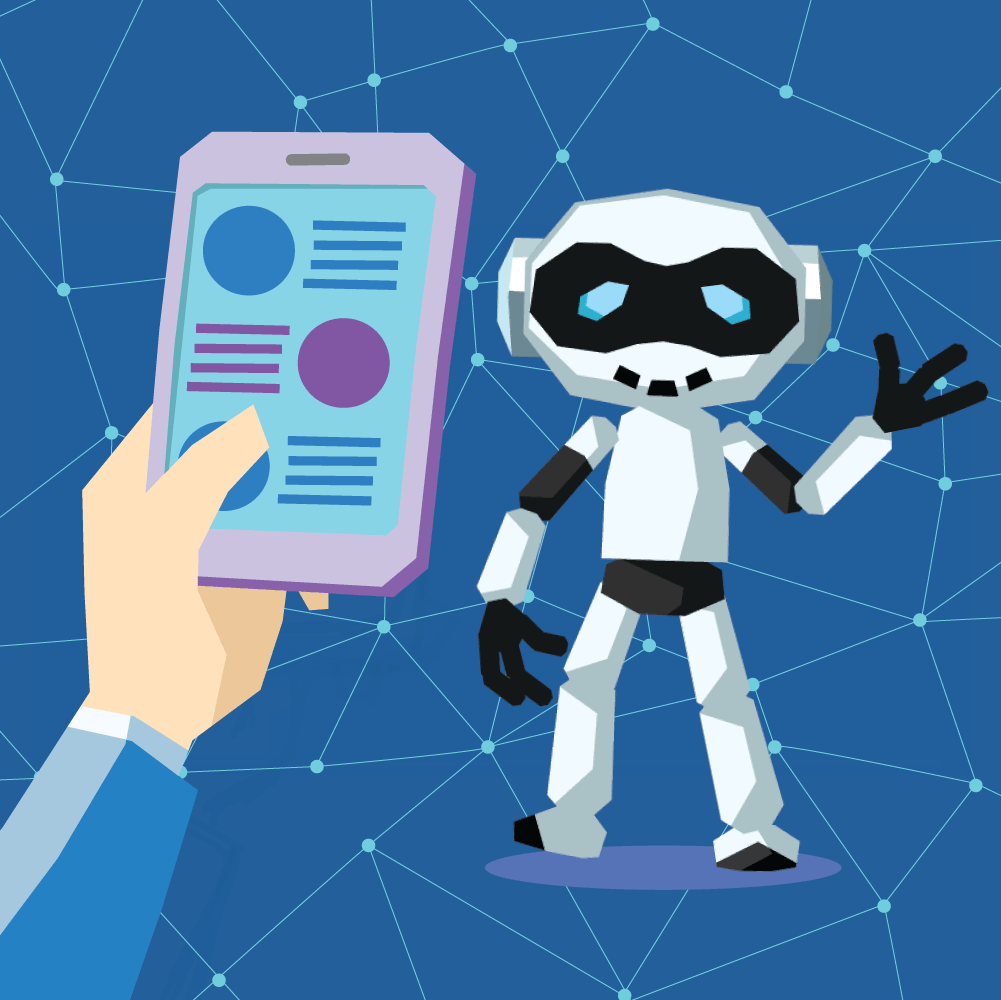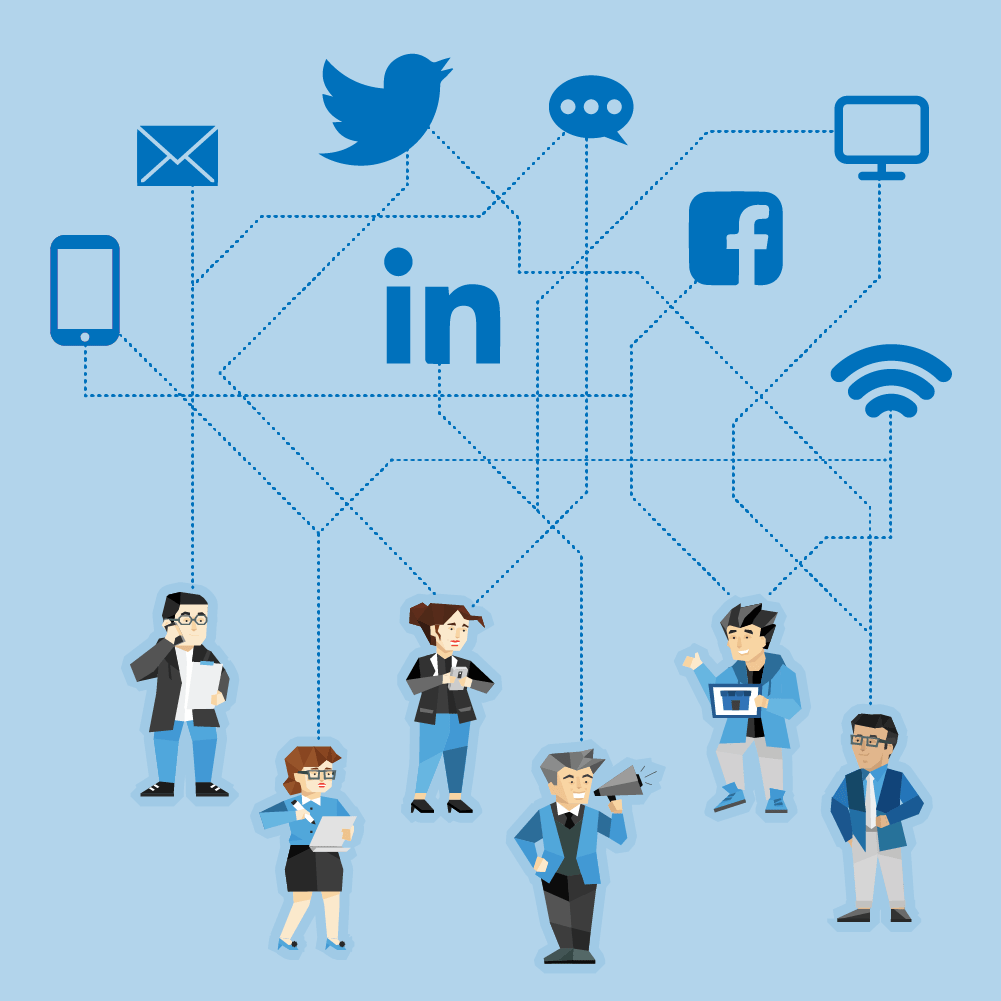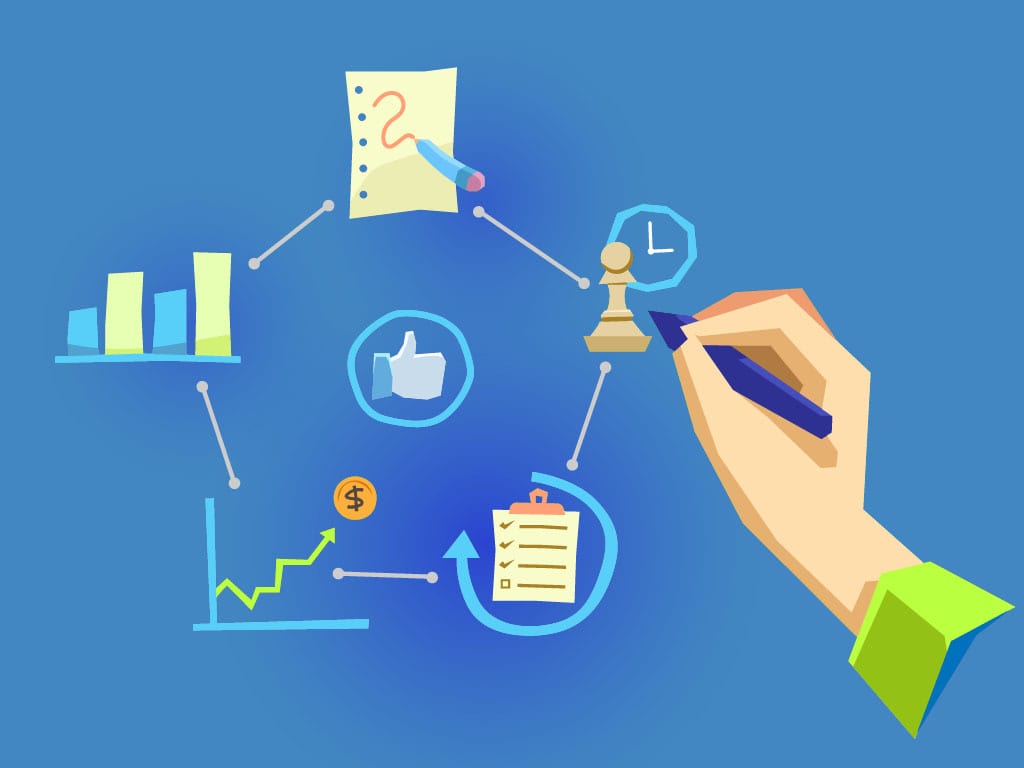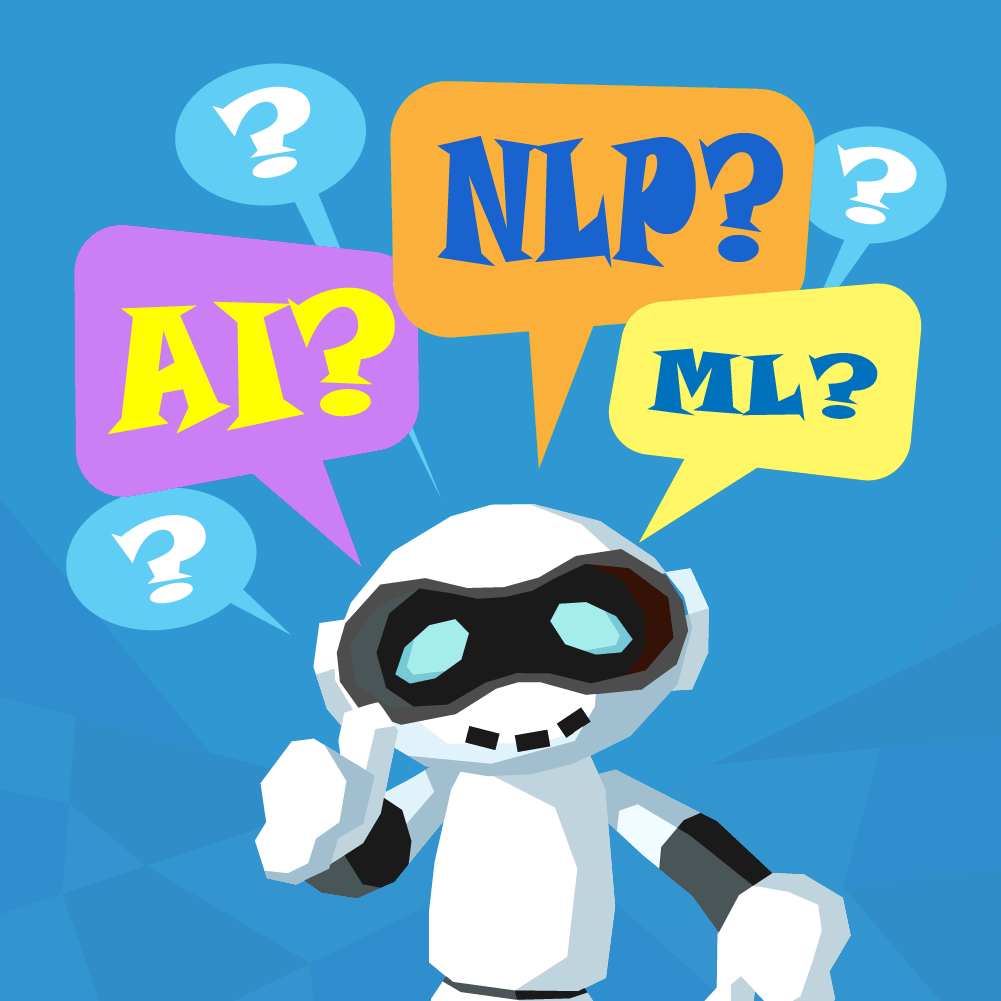The Costs of Chatbot Development Depends on the Company’s Needs

Artificial Intelligence (AI) has become one of the most powerful technological advancements in the history of Information Technology (IT).
As AI hardware and software robots continue to evolve and expand within different realms of business-implementations, many business executives recognize the significant advantages that AI can present to their business.
While AI can take many different forms, arguably the most important software AI innovation in the modern day – that SMEs and larger enterprises alike can leverage – are chatbots.
Chatbots are AI-robots (software applications) that utilize human-like intellect to automate a variety of tasks, all while understanding – and communicating (“chatting”) – in a natural human language, either by text or voice.
Chatbots have the capabilities to greatly decrease overhead, save businesses thousands of dollars in marketing, sales, customer service, and customer acquisition costs (CAC), and can better the bottom line by increasing efficiency, streamlining operations, and boosting company productivity.
Ultimately, Chatbots can help businesses to automate internal and externally-facing workflows and become revenue generators, not just cost centers.
While chatbots are slowly becoming ubiquitous and business executives attempt to determine if deploying a chatbot is right for their enterprises, estimates by several large statistical companies indicate that customer communications with their favorite brands will be with automated systems (including chatbots) – 85 percent of the time – by 2020.
Business officers and executives may wonder how much it costs to develop a chatbot, if an AI-bot is cost-effective, and whether it aligns with their business and financial goals and has a positive ROI.
Utilizing an AI-chatbot within an organization requires three major phases: development, implementation, and deployment. The cost of effectively carrying out the initial phase – development – and to a lesser extent, the latter two phases, is largely dependent on the specific goals of the organization, their financial targets, the strategy being implemented in conjunction with the chatbot/AI system, and the complexity of the chatbot in question. While there are a myriad of other factors in place affecting the costs associated with developing a custom or platform-based chatbot, the major factors are all determined by the company’s specific needs. The development of a chatbot is similar to the development of any software application: a skilled set of software engineers will have to work with a variety of frameworks, platforms and code systems to design and develop the AI system, all while using a specific Software Development Life Cycle (SDLC), and software development model (i.e. Waterfall, Agile, DevOps, etc.).
The design of chatbots allows their integration with a variety of IT infrastructure systems – including enterprise systems – and to communicate with end-users or business officers in human language, increasing customer engagement, and streamlining internal business operations. For AI bots to accomplish all this, they must be developed in ways similar to standard apps, but require unique, complex algorithmic programming to allow Machine Learning (ML), Deep Learning (DL), Natural Language Processing (NLP), Conversational UI, and – for advanced AI chatbots – Neural Networks. The development of AI Chatbots typically (but certainly not always) requires more skill, time, resources, and funds than do standard software applications. And, as noted above, the costs will largely depend on the goal of the chatbot within the realm of the enterprise’s strategy.
Often Chatbots are used to optimize marketing operations, assisting inbound marketing/content marketing and increasing prospect engagement (Top of the Funnel and Middle of the Funnel), with automating sales processes, and with quickly handling a large amount of customer service workflows. Since the major aim of a chatbot is to automate business tasks, a simple chatbot could be effectively developed and deployed for a few hundred dollars (e.g. $600), while a more complex enterprise-level chatbot would require more robust development processes and might cost an enterprise upwards of $6,000, or even up to $20,000, depending on the industry, use-case and complexity of the AI-bot.
Chatbot Use Cases and the Business IT Strategic Plan
Chatbots are used in different ways depending on the industry. While a chatbot that simply answers user questions via an end-user FAQ system might not require much time or funds to develop, an enterprise level AI-chatbot that integrates with a company’s ERP, CRM, or enterprise systems, and helps business officers to manage massive corporate data sets would require significant amounts of funds and resources for development. The significance of Chatbots is that they can be leveraged in seemingly endless ways in almost any business, and in any department. There are several use cases for Chatbots within organizations of any size, including:
- Retail: Automation smart bots can engage customers with information on products, automate sales tasks, and answer customer questions about products/services. Such a robust bot would require complex AI/ML/NLP programming, while a simple “FAQ” bot would not require much for development.
- Health: An AI-smart bot could help to manage and secure health databases, and could even help doctors to make diagnoses. Such advanced bots would require more overhead for development to enable extensive dialog possibilities.
- Banking/Finance: A chatbot that helps to manage a company’s accounting ledger and automates financial reports and transactions would require extensive ML programming, while a simple bot that helps a company to reconcile financial data, for instance, would require fewer funds and overhead for development.
Regardless of industry or type of company that requires a chatbot, the first step in developing a chatbot, and determining the associated costs (and projected ROI), is the development of a thorough IT strategic plan, which a Chief Information Officer (CIO), Chief Finance Officer (CFO), and Chief Executive Officer (CEO) will typically develop together. Such a plan allows a company’s officers to establish a clear goal for the chatbot, align the long-term and short-term goals of the organization with the chatbot’s functionalities, and create a detailed financial plan that highlights the costs of development versus the potential savings that the bot may provide after deployment. Such a plan requires a thorough analysis of the company’s finances and IT infrastructure, and should also project long-term financial costs vs. advantages associated with the bot. Ultimately, once such a plan is established, it is more feasible to determine what kind of bot needs to be developed – and why – along with how much it will cost to develop, implement, and deploy the chatbot system.
After the strategic plan is developed, it may be helpful for developers to create a prototype that helps shareholders and officers come to an agreement on the direction that the bot is taking, and how it can practically increase both the bottom and top lines of the company.
Types of Chatbots
When discussing the costs of developing a chatbot, note that there are different types of chatbots, including:
- Web-based: Web-based Chatbots are integrated within the system of a company’s online website and operate server side (typically using cloud systems), while working to increase customer engagement and automating sales/customer service tasks. Web-based chatbots typically require less time and money to develop when compared with standalone bot systems, depending on their complexity.
- Messaging App: As the most popular form of Chatbots, bots that are integrated into messaging apps (e.g. Facebook Messenger, Slack, Skype, Kik) allow companies to deploy them from already build platforms to connect with a large customer base without having to develop a full-fledged application from scratch.
- Standalone: Standalone Chatbots typically include voice assistants (i.e. Alexa, Siri), but may include any standalone chatbot that does not integrate with existing web or application systems. These bots require a custom platform or infrastructure to be developed from scratch for the deployment of the chatbot, making standalone Chatbots typically the most costly bots to develop.
A number of internal factors drive chatbot functionalities, all of which increase the overall cost of development:
- Machine Learning: Machine Learning is a subset of AI that allows software programs to learn new behaviors, and to thus re-write their own algorithms in order to do things that they were not explicitly programmed to do. While general AI is becoming less costly to develop, ML is more complex, requiring more time and overhead for efficient development.
- Deep Learning: Deep Learning is another subset of AI that allows a software/robotic system to learn by experience, which includes learning from massive data sets (i.e. “training”).
- Natural Language Processing: NLP allows a computer system to understand human language, and to reply via voice or text in the same language. NLP is often the most complex part of developing a chatbot, along with complex ML programming.
- Conversational UI: Conversational UI is a novel interface that allows users to interact with an app or system via voice or text commands – all in a human language. While a chatbot that simply replaces a standard menu/interface may not require much in the way of development funds/time, a more complex bot that smartly understands and answers a variety of complex phrases to allow end-users to effectively utilize the system may require more time and money for development.
Marketing and Customer Service Bots versus HR Bots
When determining the costs associated with chatbot development, businesses should understand that, typically, there are two types of chatbots: externally-facing Chatbots, and internally-facing Chatbots. While most organizations can benefit from utilizing both types in their company, some companies may only require one or the other.
Externally facing Chatbots are usually customer-facing, and are typically used to automate and optimize marketing, sales, and customer service operations. Chatbots that are used to simplify general, predefined user queries will require less time, overhead and funds to develop versus a complex bot that is used to automate and carry out all phases of a company’s marketing, sales and customer service operations.
In contrast with externally facing chatbots, internally facing chatbots – often colloquially called “HR bots” – are used to automate and optimize internal operations, such as automating financial reports, recording data for payroll, crunching sales data to help with strategic planning, or analyzing the market to help business officers with future strategies. Such bots often must integrate with custom third party enterprise systems, and must be customized to fulfill the company’s specific goals, which often requires the use of complex development processes and frameworks, which translates to a higher cost of development.
The Chatbot Development Process
Chatbot systems are software applications that are written in a computer programming language by a software engineer. His choice of programming language may not immediately affect the budget of a company, though in long term benchmark performance, scalability, and security, the choice of language is more significant. The development language becomes more important for aligning the functions of the bot with long term goals, the scalability of the bot, and the company’s long term objectives for the bot as the company grows. For instance, Java is platform independent, and highly scalable, but may not be as fast as a bot developed with C++. Additionally, some bots require a license fee, such as Java in 2019. The platform or framework chosen for development also affects the cost, as does the deployment platform.
Fortunately, a number of popular – and free – languages used for chatbot development are available, including those with already developed libraries for NLP/ML. Using a standardized API (versus custom API and libraries for custom integration) can lower the cost of developing a chatbot using a popular language. For instance, Python is a popular choice for chatbot development, in conjunction with Artificial Intelligence Markup Language (AIML). Closure, a dialect of Lisp, is another language used for development, which runs on the Java Virtual Machine, making it platform independent and scalable. At the same time, using an open source language, like PHP, allows the development costs to remain low, while providing a number of libraries for complex functions.
Chatbot development encompasses many more factors that drive the cost. One of the most important aspects of a chatbot, as mentioned before, is Natural Language Processing, and the design of the conversational flow. The conversational flow is important, since the level of interaction that the chatbot engages in helps to define how complex the bot will be, and how much it will cost to develop said bot. While a multilingual chatbot may be more costly to develop than a simple English-speaking bot, the type of conversations must be taken into account as well, and planning for the bot’s structured versus unstructured conversations:
- Structured: Structured conversations are conversations with a simple, pre-defined set of answers to specific questions. Due to the linear and simple nature of such conversations, developing the NLP component of a chatbot for these conversations is less costly than the development of NLP associated with unstructured conversations.
- Unstructured: Unstructured conversations mimic natural, real-life conversations, in which a conversation may have a myriad of keywords that must be understood by the bot in order to offer a non-predefined answer, but one which is relevant and appropriate to the topic. Due to requiring human-like intellect to understand the key theme of an unstructured conversation, developing a chatbot with the capabilities to understand and reply within the flow of said conversations is costly and requires great development skill.
Lastly, a chatbot must be trained in order for it to learn. This requires massive data sets, which must be taken into account when considering the time and resources required for the effective development of an enterprise-level chatbot.
No-Code Development Platforms versus Code-based Developmental Frameworks
There are two main ways to develop a chatbot, which greatly affects the overall cost of the development process: No-Code development platforms (e.g. ManyChat, Chatfuel, MobileMonkey, Botsify, etc.), and Code-based developmental frameworks (e.g. Microsoft Bot Framework, Wit.AI, Botpress, Botkit, API.AI, Chatterbot, etc.). Sometimes there may be some overlap with the two above categories, such that the latter (frameworks) often have pre-built models that can be deployed on popular platforms without much (or any) code. While most options within either category are not free, using a no-code platform is typically much cheaper due to the system giving the developer a variety of pre-set functions and code libraries to work with, requiring little (if any) custom code. Such a system does not require much development, enabling an engineer to develop a bot with a no-code platform much faster than one requiring a code-based framework.
The flexibility of a code-based framework gives a developer/business a multitude of ways to develop a custom bot that meets the specific needs of a company, aligning the bot completely with the goals/strategy in place. Contrasting this, a less expensive no-code developed bot is limited to the pre-set functions of the platform, which may or may not result in a bot that aligns with the company’s goals.
Ultimately, it is up to a business to determine if a no-code bot (and the associated savings) is better than a code-based bot, based on the functionalities possible with both, and how these functions align with the overall chatbot strategy.
Deployment of the AI-Chatbot
Once a chatbot is developed, the infrastructure/platform by which the bot is deployed for operation also affects the overall costs. The choice must be made to deploy a bot on a popular messaging platform (such as Facebook Messenger or Slack), or deploy the bot on a custom platform, such as a custom app, or a custom business infrastructure. It is almost always cheaper (and offering better value due to the large, existing customer base) to deploy an externally-facing chatbot on a popular messaging platform, while internal bots can be deployed on Slack or a known business app. Contrasting this, it is typically more expensive to build a custom platform for the deployment of an internally-facing or externally-facing chatbot, due to the nature of customizing and building a platform from scratch.
Security Compliance, 3rd Party Integrations, Analytics and Maintenance
There are a number of other factors that must be taken into account when determining the cost of developing a chatbot, including security/compliance and other important factors. When it comes to regulations, a chatbot associated with the health, e-commerce or finance industry, may require more extensive programming processes – and time/money for development – due to the necessity of being in compliance with regulations such as HIPAA, Sarbanes Oxley, PCI-DSS, etc.
Additionally, integrating chatbots with custom enterprise systems (e.g. CRM, ERP, etc.) – and/or deploying said bot on a custom infrastructure – typically requires more money and developmental overhead due to the custom nature of the process (which may include custom APIs and or libraries). To make the most of the chatbot, analytics systems (which may or may not be free) may also be used to analyze how well the bot performs. Such analytics systems are usually used with retail/external bots, and include systems such as Chatbase and Botlytics, among others.
Lastly, like any software system, Chatbots must be patched, upgraded and/or updated, which also factors into the total cost of developing a corporate chatbot.
Summary
Developing a chatbot is an important investment for any company of any size. While Chatbots can help a company save money and time, there are a myriad of factors that must be considered when determining the cost of developing a chatbot. Ultimately, the cost is based on the specific needs of a company, and may cost anywhere from $600 to tens of thousands of dollars, as is estimated by chatbot analysts and experts.








